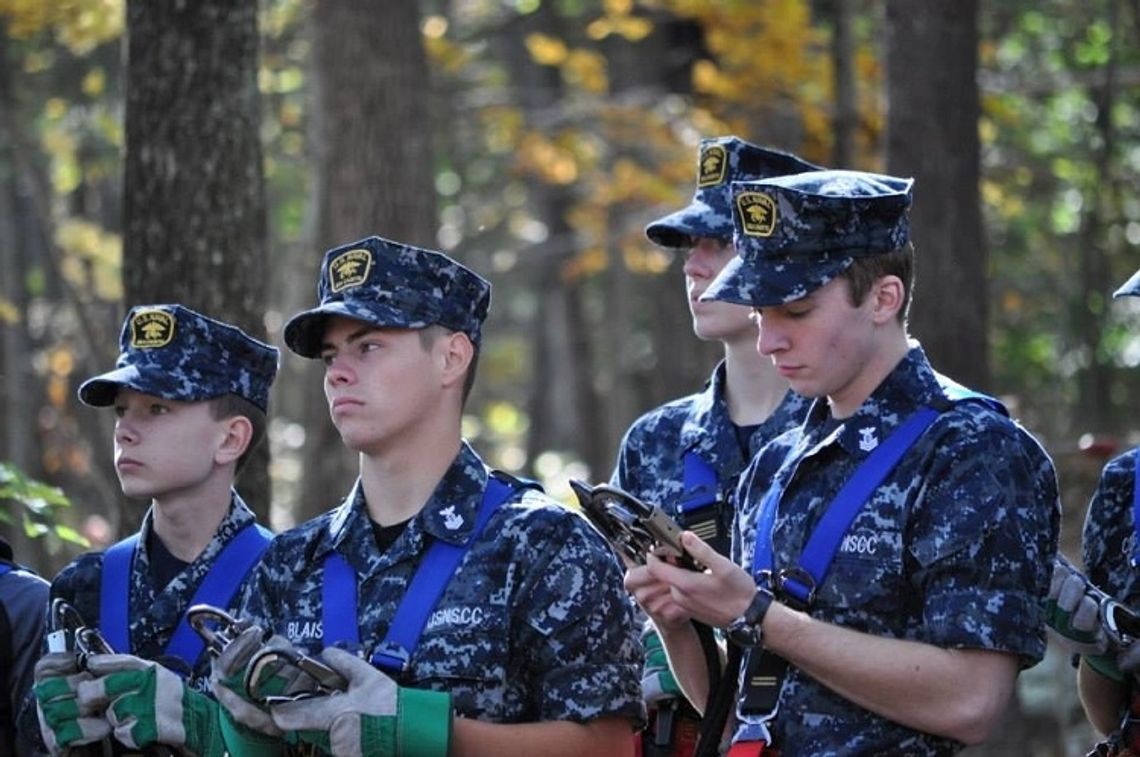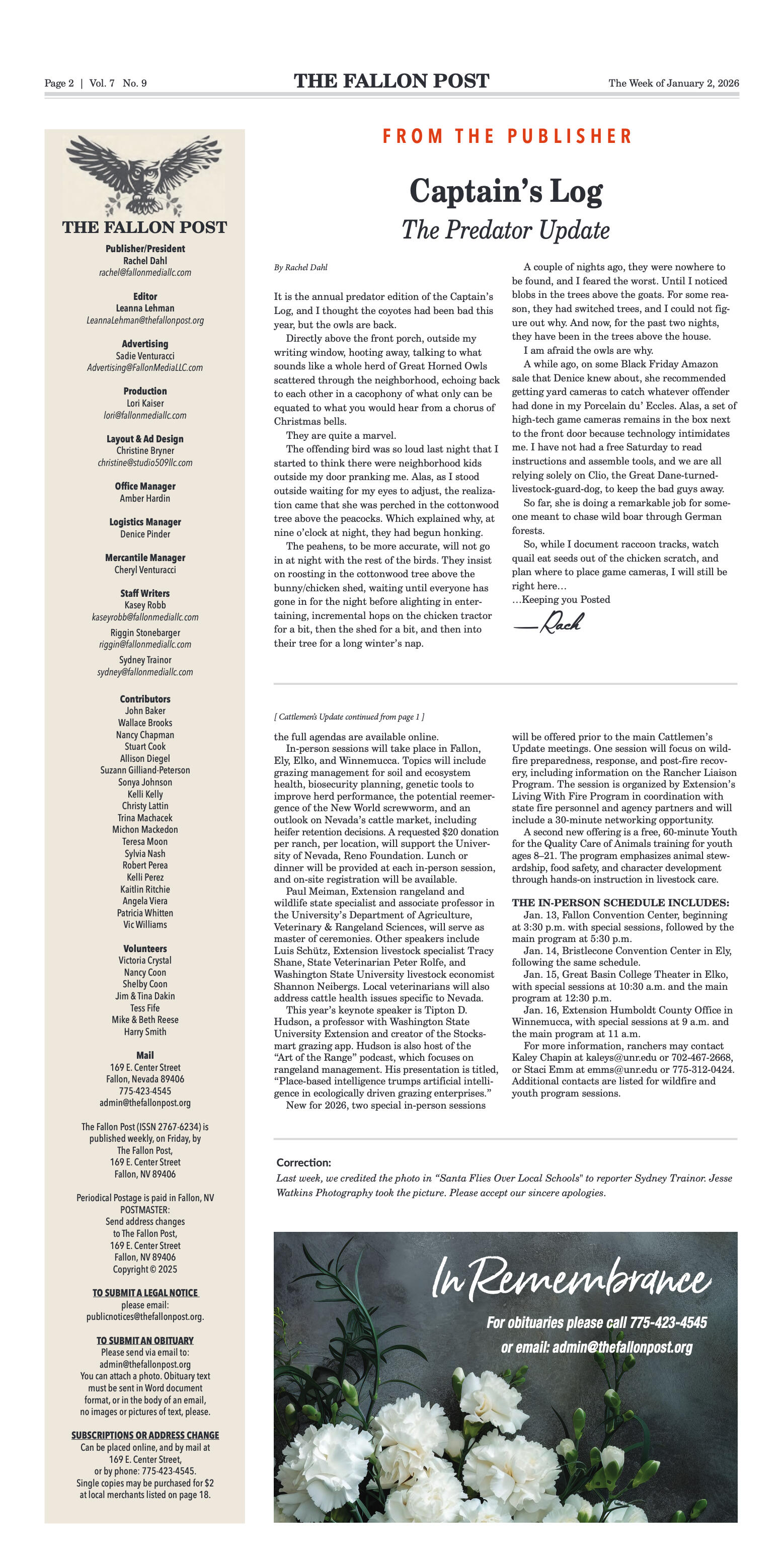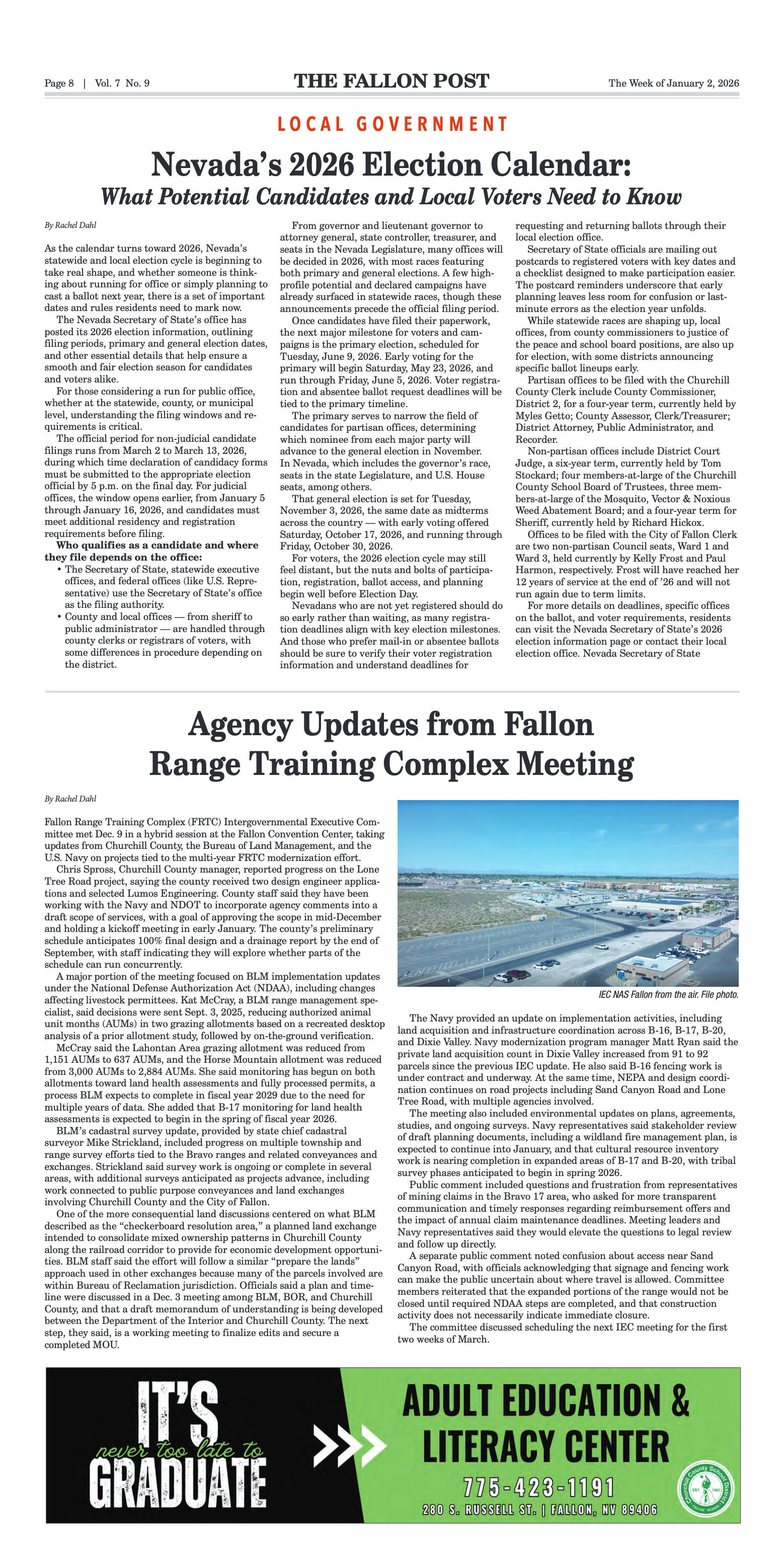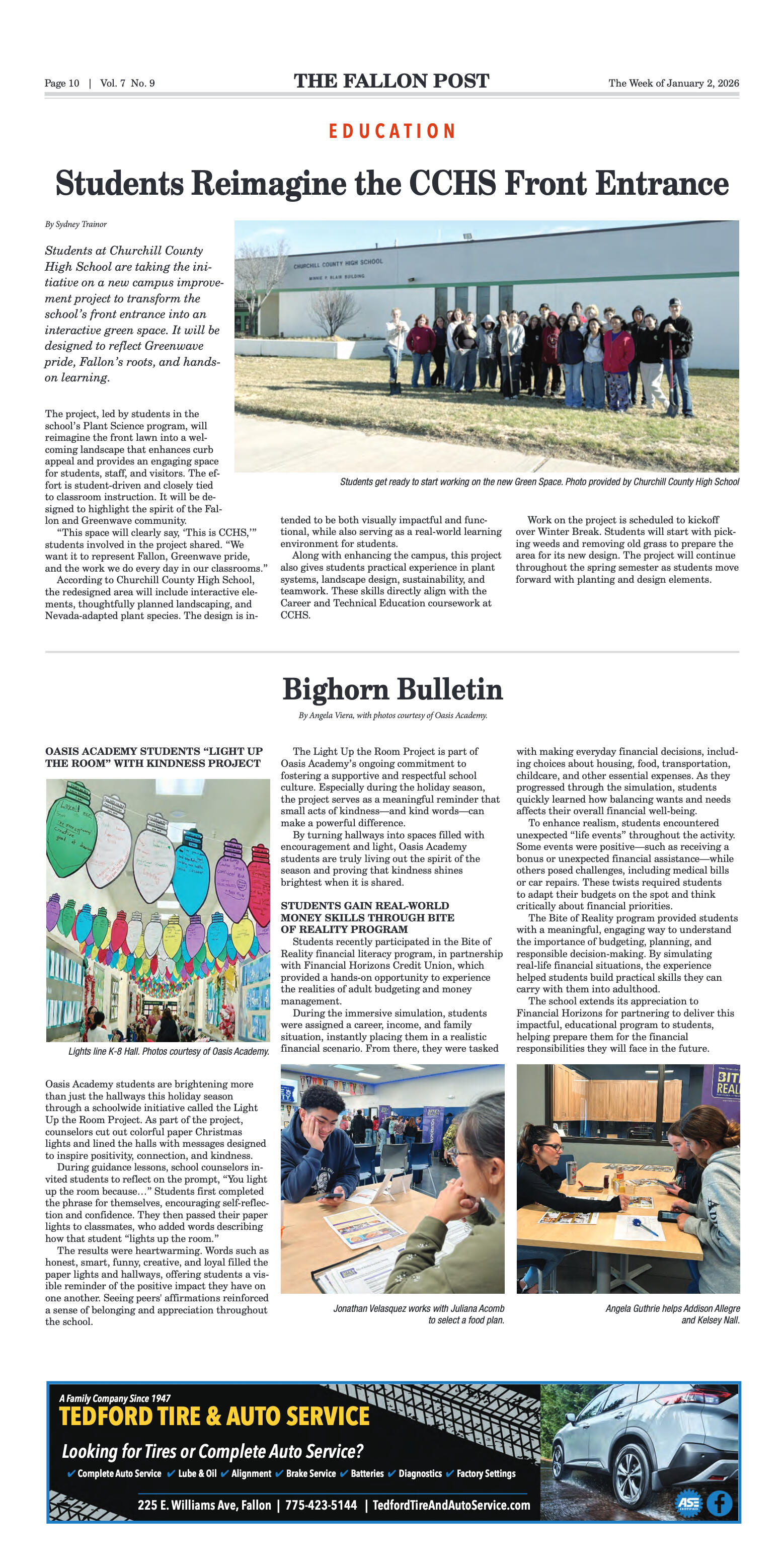Hank Wohle has been leading the Sea Cadet program, a congressionally chartered youth program in support of the U.S. Navy for the past twelve years, giving local high school students the opportunity to gain skills from organization, physical fitness, logistics, marksmanship, and sending several local students to successful careers in the military.
“We are the biggest program in the state of Nevada and we have the largest propensity for putting kids in the Navy, in the active military,” said Wohle. The program sends roughly five students each year to the military.
The Sea Cadets mirror what the active Navy does and the local organization boasts a professional staff at no cost to the military. Every year the Cadets participate in a five-day field activity, including active water survival taught by the current Navy personnel, land navigation taught by current Army personnel, and SeaBee training at the base camp taught by active Navy Reserve.
“We’re the only unit that has its own training facility located in the Sierra Nevada area outside of Doyle, California,” said Wohle. Cadets from across the country converge at the local facility for their field activities. “We have our own mess section where we feed over 1,200 meals in a five-day period. We are the closest thing to the real deal as a youth program.”
When the program began twelve years ago, there were three cadets and now it averages 35 to 40 cadets yearly. The leadership of the Sea Cadets is comprised of two retired Lt. Colonels, two Navy Chiefs, two Marines, and active-duty Navy personnel from the base. Three tours in cadet command, UNLV, UNR, and the second region headquarters of cadet command in Ft. Knox Kentucky, all interfacing with thirteen state adjunct generals, and 98 University presidents. “I’m very well-versed in what we’re doing here,” said Wohle.
He says the proof of the strength of this local program lies in the success of the students who have gone on to impressive careers. “We have the Smith brothers whose grandfather is a former Marine and is now one of our instructors. His oldest grandson, Hunter Smith, was our LPO and is now in the U.S. Navy’s nuclear program. Hunter is a candidate for the U.S. Navy Officer Program in Annapolis, Maryland. His younger brother, Ethan is a Junior at Fernley High School who played Varsity Football and has been in the Sea Cadet for over five years.”
The local Sea Cadet program is funded by the National Sea Cadet program, along with local organizations including the Elks, the American Legion, and other local contributions. The program was started on the NAS Fallon base in Barracks Four. “The reason this program is so successful is that we’re centrally located on the base. We need to be centrally located to go to the gym for physical training, the athletic fields for physical training, and to go to the mess hall. What’s good about that is the cadets emulate how the active Navy participates.”
The cadets were moved to Barracks One and then moved to a temporary facility, before allowing them to move all their equipment, furniture, and uniforms back to Barracks One. Wohle says they now have a facility that is second to none but is being moved again.
The unprecedented growth at the NAS Fallon is squeezing capacity on the base for both facilities and housing. And now the Sea Cadets program is being moved from the building they’ve occupied for the past ten years to make room for a temporary command at NAS Fallon. “Our kids shouldn’t be treated like that,” said Wohle, “we’ve been in this building for ten years with one-hundred percent support of the Navy. These kids are a casualty of this growth. If the kids can be in the Golf Ball, (the checkerboard building at the base), why can’t the temporary command that’s coming in for a year take it, are our kids any less worthy of that? They shouldn’t be treated like that.”
Wohle says the move puts the program at risk. “If we’re out in the south-40 the kids cannot participate, it makes it more difficult to go to the gym, and access facilities.” He is afraid the program will be a casualty of growth at NAS Fallon. “It would take intervention from the base commander to intervene and keep us at this facility.”








































Comment
Comments